Dodekaschoinos › Dodona › The Eastern Perspective on the Trinity » Origins and History
Articles and Definitions › Contents
- Dodekaschoinos › Origins
- Dodona › Origins
- The Eastern Perspective on the Trinity › Origins
Ancient civilizations › Historical places, and their characters
Dodekaschoinos › Origins
Definition and Origins
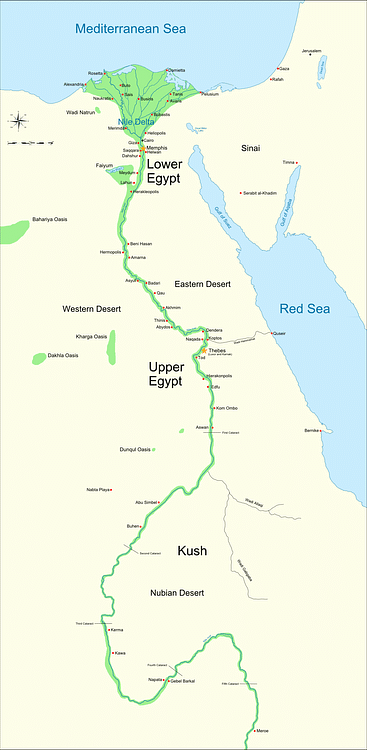
The Dodekaschoinos (literally "Twelve Cities " in Greek ) was the name of a region in Lower Nubia that became an important province of the Ptolemaic Kingdom after it was annexed from Meroitic Nubia by the Egyptian kingdom. The area fell under Roman influence in the 1st century BCE following Egypt 's conquest in 30 BCE. Its area extended between the 1st and 2nd Cataracts of the Nile in ancient Kush although parts are within modern-day Egypt.
HISTORY OF THE REGION UNDER THE PTOLEMAIC KINGDOM
The beginning of Ptolemaic influence in Nubia began when Ptolemy II (283-246 BCE) led a campaign against the kingdom of Meroe c. 275 BCE and successfully conquered the province which was afterwards referred to as "the Twelve Cities". It then fell under the administration of the Egyptian nomes (a term for the provinces Egypt was divided into). It was at first technically a part of the Thebaid nome, but in reality, it was governed by the commander in charge of the soldiers garrisoned in the region. This situation remained unchanged until sometime in the 2nd century BCE when the region was reintegrated into the Elephantine nome with its civilian governor instead of being a part of the Thebaid nome.
WHEN PTOLEMY V RETOOK THE PROVINCE, HE DEDICATED THE DODEKASCHOINOS & PHILAE TO ISIS AS AN ATTEMPT TO LEGITIMISE THE PTOLEMAIC RULE OF THE REGION.
The Dodekaschoinos retained much of its native administration, and a Nubian governor appears to have been appointed and had authority over the Nubian inhabitants of the province. Many Nubian inhabitants of the region integrated into Ptolemaic and later Roman society like their Egyptian counterparts, acquiring Greek language and education, citizenship rights and Greek or Roman names. Kushite or "Aethiopian" slaves are also known from throughout the Ptolemaic and Roman world, but particularly in Upper Egypt which was nearest to Nubia.
The Dodekaschoinos was part of the secession of Upper Egypt (205-185 BCE) that was supported by the Meroitic kingdom which sought to regain formerly Nubian territory through an alliance with the rebellious Egyptian factions. When Ptolemy V retook the province (c. 185-184 BCE), he dedicated the Dodekaschoinos and Philae to Isis as an attempt to legitimise the Ptolemaic rule of the region and ingratiate the Temple of Isis in Philae.
TRADE & CULTURAL SIGNIFICANCE
Its conquest by Ptolemaic Egypt opened up new trade routes to the Ptolemaic Kingdom from Nubia to the border cities of Ptolemais Theron and Elephantine. Elephantine, in particular, was at the centre of the trade in ivory, gold, iron, and slaves, which were transported further north by the caravan routes connecting the border trade cities to the Red Sea port cities and the rest of Egypt. African elephants were also imported for warfare, and this is mentioned in a dedication by Ptolemy III (246-222 BCE) who boasts of being the first to tame "Troglodytic" and "Aethiopian" elephants and use them for war in an inscription recorded by Cosmas Indicopleustes in his Christian Topography (c. 550 CE):
Great King Ptolemy, son of King Ptolemy [II] Queen Arsinoe, the Brother- and Sister Gods, the children of King Ptolemy [I] and Queen Berenice the Savior Gods, descendant on the paternal side of Heracles the son of Zeus, on the maternal of Dionysus the son of Zeus, having inherited from his father the kingdom of Egypt and Libya and Syria and Phoenicia and Cyprus and Lycia and Caria and the Cyclades islands, led a campaign into Asia with infantry and cavalry and fleet and Troglodytic and Aethiopian elephants, which he and his father were the first to hunt from these lands and, bringing them back into Egypt, to fit out for military service. (McCrindle, 58)
The use of African elephants in warfare by the Ptolemaic Dynasty came to an end after the battle of Raphia (217 BCE) against the Seleucid Empire made it clear that they were no match for the Asiatic elephants that were imported from the East, but the trade in ivory and exotic animals from the Nubian province remained lucrative, and elephants continued to be exported for various purposes.

Roman Mosaic Showing the Transport of an Elephant
It has been suggested that the conquest of Egypt by foreign powers in the mid-1st millennium BCE and the subsequent invasions of Lower Nubia upset pre-existing power structures and factored in the rise of the Meroitic dynasty in Nubia. The changes to existing power structures and Nubian relations with their neighbours to the north and south during this period were needed to secure its position as the dominant power south of Egypt that allowed Nubia to dominate the immensely lucrative trade from East Africa and the Red Sea silk route. This trade between more southern regions of Africa, Asia, and Egypt was integral to Meroe's importance as a hub of trade for the known world in spices, slaves, gold, iron, timber, animals, ivory, silks, and other items until Aksum superseded it as a trading power around the 4th century CE. These changes also brought new cultural influences to Nubia as it developed closer connections with the Mediterranean and Asia. Archaeological finds of Greek and Roman artefacts like jewellery and games testify to Meroe's wide trade network during this time which was closely intertwined with increasing Mediterranean trade from Northeast Africa as a whole.
During this time architectural influences from Ptolemaic Egypt also impacted Nubia. Temples like that at Musawwara et Sufra were erected in collaboration with Ptolemaic builders, displaying elements of Greek and Egyptian styles as well as traditional Kushite designs. The "Royal Baths", a water sanctuary in Meroe dating to the 3rd century BCE, bear elements of Hellenisticand Roman architecture comparable in some respects to Alexandria or Cyrene. Depictions of Hellenised Nubian deities and Greek deities like Pan have been found at the site.
RELATIONSHIP WITH PHILAE
Philae had been a religious and political hub of the region since the Late Period of Ancient Egypt when Nectanebo I (379-361 BCE) constructed a temple to Hathor which continued to be renovated under later pharaohs. The fate of this city was often intertwined with that of Lower Nubia and Upper Egypt's fluctuating border as a result of its location, and it was often used as a nexus point between Lower Nubia and Upper Egypt and a meeting place for the rulers of Egypt and Nubia. It was the symbolic line of demarcation between Egypt and the Dodekaschoinos in the Ptolemaic and Roman periods.
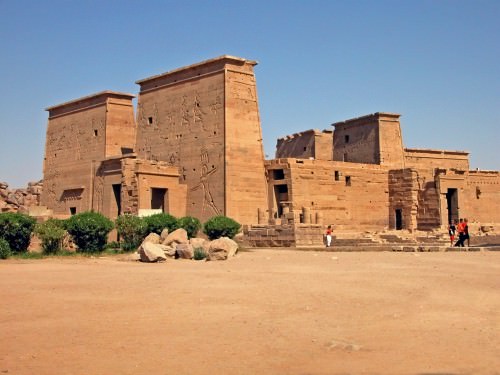
Temple to Isis at Philae, Aswan
A network of commerce existed between Nubia and the Ptolemaic kingdom through Philae and the Dodekaschoinos. The regional temples oversaw trade and donations as well as fostering cultic connections throughout Egypt and Kush. The Ptolemaic kings erected temples to Thoth and to Nubian gods like Arensnuphis and Mandulis in the Dodekaschoinos, and during some festivals, Nubian gods (ie the statues and their attending priests) made pilgrimages from the Nubian temples to Philae in processions down the Nile. Ptolemaic rulers from Ptolemy II all the way down to Cleopatra VII (51-30 BCE) patronised this site. Various dedications record occasions where Ptolemids visited Philae for religious purposes. Some Nubians held priestly offices at Philae and represented the Meroitic king in diplomatic capacities at the Temple to Isis at Philae.Nubian envoys to Philae are mentioned in various Ptolemaic and Roman contexts bearing gifts, tribute, and diplomatic messages.
THE DODEKASCHOINOS AFTER THE ROMAN CONQUEST OF EGYPT
After the Roman conquest of Egypt in 30 BCE, the region faced further conflicts and changes as Augustus (27 BCE -14 CE) recognised both the potential dangers that Nubia held to his rule and the opportunities that its conquest could bring. The first prefect of Roman Egypt, Cornelius Gallus, faced rebellions in Upper Egypt and Lower Nubia as a result of taxation c. 29 BCE, but he was able to quickly quell these rebellions and attempted to assert Roman authority over Nubia according to a stela erected at Philae which reads:
Praefectus Aegypti Cornelius Gallus says to pride oneself on his victory he achieved: "Gaius Cornelius Gallus son of Gnaeus, the Roman cavalryman, first prefect of Alexandria and Egypt after the defeat of kings by [Augustus] Caesar son of the divine, and the vanquisher of Thebaid's revolution in fifteen days, defeated the enemies twice during it in a general battle, and took over five cites by force: Boreses, Coptos, Ceramici, Diospolis Megaly, and Ophion, and having captured the leaders of these revolutions. Having led his army beyond the cataract of the Nile, where neither the armies of the Romans nor those of the kings of Egypt had gone before, and subjugated Thebaid, the source of dread for all kings, and given listening to the ambassadors of the king of Aethiopia and taken that king into protection, and appointed a ruler for the Tiracontoschoenus [Dodekaschoinos]...in (?) Aethiopia, he [Gallus] presented this dedication and gave thanks to the ancestral gods and the Nile, his hel per." (Translation from M. Solieman)
These actions and the hubristic boasts made concerning his achievements led to Augustus stripping him of command and replacing him with Gaius Petronius who was evidently more successful concerning the conflict with Nubia and less over-reaching in his ambitions in his first prefecture. Augustus replaced him with Aelius Gallus in 26 BCE, but when Gallus went east to lead Augustus' planned conquest of Arabia (c. 25 BCE) Queen Amanirenas of Meroe took the opportunity to invade the Dodekaschoinos and then Upper Egypt. They successfully occupied Syene, Philae, and Elephantine, where they expelled the Jews, and in the process of their raids and occupations, they carried off Roman prisoners and several bronze statues of Augustus. One of these statues, known today as the "Meroe Head", was found in 1910 CE where it was buried, beneath a Meroitic temple to the Nubian god Arensnuphis, a patron of warfare among other things.
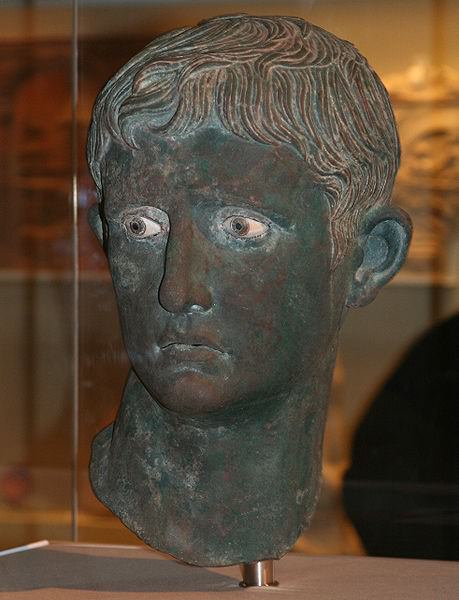
The Meroe Head of Augustus Caesar
In 24 BCE Petronius was restored to the position of prefect of Egypt, and in 23 BCE he led a punitive expedition south into Meroe allegedly as far south as the city of Napata, which he sacked. After recovering prisoners and statues as well as taking hundreds of Nubian captives he retreated north, establishing the new border of Roman territory at Primis (Qasr Ibrim). Queen Amanirenas retaliated with vigour and made attempts to retake Primis in 22 BCE which Petronius stalled. Afterwards, the Meroitic kingdom made overtures to Petronius in hopes of a negotiation, but Petronius chose to refer these to Augustus.Around 22-21 BCE Augustus agreed to all the terms set by Amanirenas' envoys while Meroe returned many (but evidently not all) of the stolen statues and ceased hostilities. The agreed-upon border restored the shape of Roman Nubia to roughly that of the Ptolemaic province, with the restored border falling on the southern edge of the Dodekaschoinos.
In the Roman Imperial period, the trade routes and political connection between Nubia and the Dodekaschoinos strengthened, and Nubians continued to have a strong religious and diplomatic presence as far north as Philae. A large proportion of the Sub-Saharans generally referred to as “Aethiops” who inhabited Egypt and the rest of the Roman Empire as citizens, subjects, or slaves originated in and emigrated or were exported from Nubia. The importance of the temple networks continued until Philae's conversion to Christianity in the 4th century CE when Christianity became the dominant religion in Egypt and Nubia and many temples were abandoned, destroyed, or converted into chapels.
Dodona › Origins
Definition and Origins
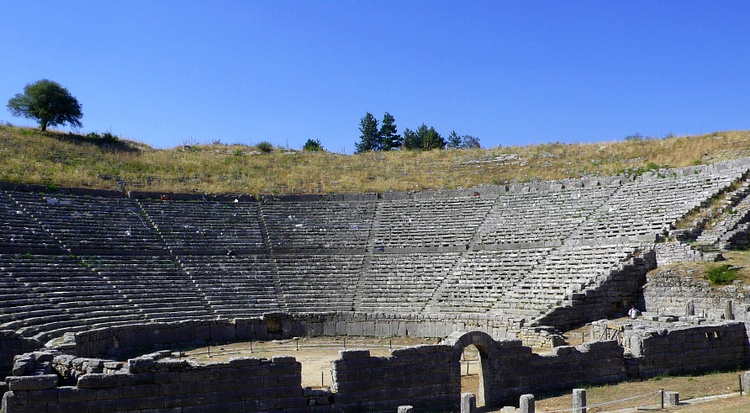
Dodona in Epirus, north-west Greece, lies in a valley on the eastern slopes of Mt. Tomaros and was famed throughout the ancient Greek world as the site of a great oracle of Zeus. The site was expanded in the Hellenistic period, and one of the largest theatres in Greece was built which, recently restored, stands as testimony to Dodona's importance throughout antiquity.
HISTORICAL OVERVIEW
The origin of the name Dodona is uncertain but may derive either from the Oceanid nymph of the same name or the river Dodoni. First settled in the early Bronze Age, Dodona benefitted from a "hundred springs", and there is some evidence of an early chthonian cult to a fertility/Mother earth goddess, which is consistent with Hesiod ’s description of a Great Goddess who fed her worshippers roasted acorns and a scene on a Mycenaean gold ring excavated at the site. Bronze weapons and pottery finds further indicate Dodona was inhabited in Mycenaean times (from the 15th century BCE), but the site gained wider celebrity in the Archaic and Classical periods as a sanctuary to Zeus Naïos (Dweller) and Dione Naïa, both of whom appeared side by side on coins of Dodona and who were reincarnations of the earlier sky/storm god and fertility goddess, respectively.
PYRRHUS MADE DODONA HIS RELIGIOUS CENTRE, INAUGURATED THE FESTIVAL OF THE NAÏA IN HONOUR OF ZEUS, AND CONSTRUCTED A LARGE THEATRE.
In Hellenistic times Pyrrhus (319-272 BCE), the king of Epirus, made Dodona his religious centre, inaugurated the festival of the Naïa in honour of Zeus, and constructed a large theatre and a colonnaded precinct. Pyrrus also famously hung shields in the precinct of the Romans and Macedonians he had defeated in battle. The fortunes of Dodona took a turn for the worse in 219 BCE when it was sacked by the Aetolians. Revenge was taken in 218 BCE and the site rebuilt on a larger scale. Dodona once again suffered attack in 167 BCE, when the Romans conquered Epirus and burnt down the sanctuary. The Naïa festival was, however, revived and continued to be held up to the 3rd century CE. The sanctuary ceased to function as a pagan site in the 4th century CE following the decree of Theodosius, and the oak tree was uprooted. In the 5th-6th century CE a Christian Basilica was built. In the mid-6th century CE, following the Slav invasion, the site was definitively abandoned.
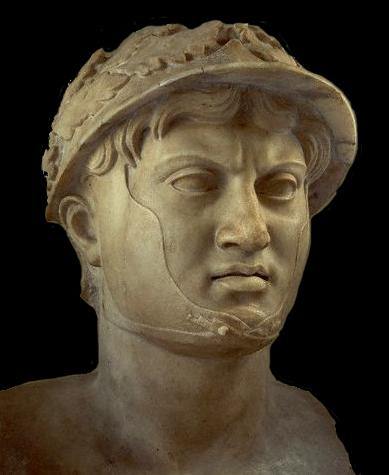
Pyrrhus
THE ORACLE OF DODONA
The oracle at Dodona was considered the oldest in Greece, even if it was later replaced in importance by the oracle of Apolloat Delphi. According to Herodotus ( Histories 2.57) the oracle was founded when two black doves flew from Thebes in Egypt ; one dove settled in Libya to found the sanctuary of Zeus Ammon, and the other settled in an oak tree at Dodona, proclaiming a sanctuary to Zeus be built there.
In Greek mythology the oracle was visited by notable heroes, such as Jason, who was told by Hera to place a protective branch from the sacred oak tree on the prow of his ship the Argo before he set off on his search for the Golden Fleece. In Homer ’s Iliad Achilles, too, called on the help of Zeus Dodonean during the Trojan War in order to protect Patroclus in his fight against Hektor. In the Odyssey the hero Odysseus also consults the oracle to discover if he should return to Ithaca as himself or in disguise. Historical figures who are known to have consulted the oracle include Agesilaus, king of Sparta, and the Roman emperor Julian.
Traditionally Zeus answered questions from pilgrims via the rustling of leaves or doves (Peleiades) in his sacred oak tree which was encircled with bronze tripod cauldrons (fragments of which survive). The bronze tripods all touched and so could create a circle of sound which rang continuously, both protecting the site from evil and providing another source of Zeus' communication with humanity. Amongst the Greeks, the ringing sound the tripods produced gave rise to the expression a "Dodonian chatterbox". From the 4th century BCE, a small temple (Hiera Oikia) was constructed next to the tree, and a wallwith a southern entrance was built to encircle the oak tree, replacing the ring of bronze tripods. A bronze statue of a boy holding three chains of knuckle bones was set up by admirers from Corcyra, and when the wind blew, the chains knocked against a cauldron so that the tree maintained its protective ringing. In the 218 BCE re-building programme, the Hiera Oikia was extended, with a colonnaded courtyard and monumental entrance added.
The sanctuary was maintained by an order of priests known as the Selli (or Helli) who were known to sleep on the ground and had unwashed feet so that they might more directly draw their power from the earth. From the 5th century BCE, three priestesses guarded the oracle, later to be known as the three "Doves", and who interpreted and passed on the god's responses in a state of trance, as at Delphi. These priestesses are named by Herodotus as Promeneia, Timarete, and Nicandre. Unlike at Delphi, where the oracle was often consulted on important matters of state, the oracle at Dodona was typically used to settle more private matters. Believers would write their question on a tablet and receive a simple yes or no in response.
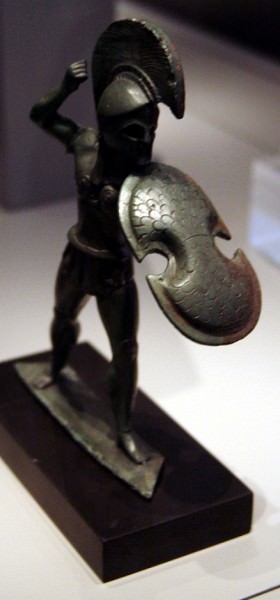
Hoplite Warrior, Dodona
ARCHAEOLOGICAL REMAINS
Remains of several primitive Bronze Age huts, one with a floor kiln, have been excavated at the site. Various remains survive from the 4th century BCE Hiera Oikia which stood by the sacred oak tree and which was developed in four distinct phases to eventually measure 20.8 x 19.2 metres. There is also the 9.8 x 9.4 metre base of the 4th century BCE temple of Dione which was replaced by another temple in the 3rd century BCE a little to the south. Other temples at the site, of which only their foundations and fragments survive, include a 3rd century BCE Doric Temple of Hercules, the 4th century BCE sandstone Temple of Themis, and the contemporary Temple of Aphrodite, identified by many clay figurines of the goddess found around the temple remains. On the 35 metre high acropolis, parts of the 4th century BCE fortifications survive which once measured 750 metres in length and included ten rectangular towers and three gates.
The Bouleuterion, where the council met, was once 43.6 x 32.35 metres with a frontal stoa and brick upper structure, but only stone benches and a stone altar survive along with the building's base. Finally, there are traces of the 3rd century BCE Prytaneion, where officials dined and a sacred fire was kept continuously alight, and the House of the Priests which joins the retaining wall of the theatre. The 3rd century BCE also saw the construction of a stadium with 21 or 22 rows of seats. This was used for the athletic games of the Naïa festival.
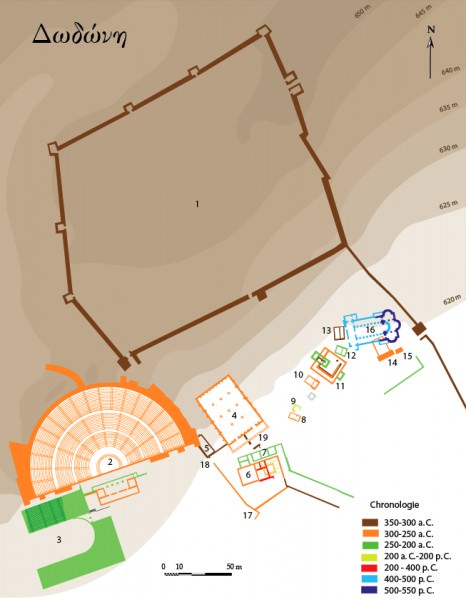
Plan of Ancient Dodona
Without doubt the most impressive surviving monument at Dodona is the 3rd century BCE theatre, now restored, which once had a capacity for 17,000 spectators, making it one of the largest in Greece. It was principally constructed to host the festivals of Naïa which were held every four years. Built into the hillside it was so large (22 metres high) as to require a retaining wall which has impressive tower bastions. The semi-circular theatre had 55 rows of seats split in three horizontal sections divided by ten flights of steps. Two separate large staircases gave quicker access to either end of the auditorium. Two monumental parodoi (doorways), a circular orchestra, and a skene complete the typical features of a Hellenistic theatre. Sometime during the reign of Augustus, the theatre was converted into an arena for gladiator games and animal fights.
The Christian Basilica of Dodona was built in the 5th century CE and had three aisles created by two colonnades each with seven breccia columns. The building also used material from older structures at Dodona and was itself modified in the 6th century CE, probably following earthquake damage.
Of the smaller pieces from Dodona's heyday, some lead tablets addressed to the oracle survive and now reside in the museum at Ioannina. Pottery is represented by two-handled Mycenaean pots which include examples with applied nodules and roping.Finally, several fine bronze figurines survive, notably a griffin from a tripod, two child figures, and several hoplite warriors.
The Eastern Perspective on the Trinity › Origins
Ancient Civilizations
All too often, the Eastern perspective on the Trinity is mistakenly overlooked by Western society in the study of Church History.This is unfortunate, for men like Gregory of Nazianzus (329–390 CE) and John of Damascus (676–749 CE) offered insightful understandings in the first centuries of early Christianity regarding the theological understanding of the Trinitarian relationship in the Hebrew and Greek biblical texts. In their own literary works, both Gregory and John sought to answer questions concerning the equality of the members of the Divine Family, the distinguishing aspects of each person, the origins and procession of the Son and Holy Spirit, as well as the interaction and influence between them all.
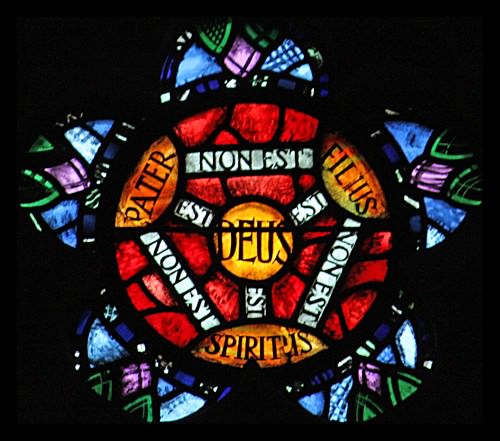
Holy Trinity
Some fine examples of the doctrinal contributions of Gregory and John concern the equal standing of the Holy Spirit with the Father and the Son. As Sahinidou states,
The Eastern Church Fathers borrowed both the verb and the noun from Anaxagoras where it means revolution, rotation as cosmic differentiation, ordering, continuation, and extension. The noun περιχώρησις names the process of making room for another around oneself, or to extend one's self round about. (552-553)
Although these ancient theologians' interpretations may not be totally exhaustive, they are still valuable, nonetheless, in understanding the development of Trinitarian thought that began in the 4th and 5th centuries CE.
GREGORY OF NAZIANUS ON THE SPIRIT
In his work, The Fifth Theological Oration - On The Spirit, Gregory of Nazianzus argues for the divinity of the Spirit. In this oration, he provides his exhaustive depiction and discussion of the ontology and functionality of the Spirit and asserts its equality within the Divine Family. Opposing some 4th-century theologians who believed the Spirit to be subordinate to the Father and Son (and aligning with a key argument of the Cappadocian Fathers), he writes, "If he is in the same rank with myself, how can he make me God, or join me with Godhead?" (Nazianzus, The Fifth Theological Oration - On The Spirit, 196).
In Gregory's mind, the Holy Spirit must have equal status with the other godly members for "he is neither a creature, nor a thing made, nor a fellow servant, nor any of these lowly appellations" (Nazianzus, The Fifth Theological Oration - On The Spirit, 197). Appealing to evidence and logic, he suggests that any other understanding of the Spirit is unbiblical, "imperfect" (Nazianzus, The Fifth Theological Oration - On The Spirit, 198), and "absurd" (Nazianzus, The Fifth Theological Oration - On The Spirit, 197).
JOHN OF DAMASCUS ON THE TRINITY
John of Damascus also offers his take on this question of the Trinity. In Exposition of the Orthodox Faith, he remarks, "For the subsistences dwell in one another, in no wise confused but cleaving together" (Damascus, 10), and "the three holy subsistences differ from each other, being indivisibly divided not by essence but by the distinguishing mark of their proper and peculiar subsistence" (Damascus, 10). The Holy Spirit, then, is in equal unity and relation with the Father and Son. Although each member may focus on different roles, they are still of the same essence—meaning that throughout all is the divine nature and a divine interconnection.
Expanding upon their position on the Trinity, Gregory and John offer an even more detailed breakdown of the unique purpose and character of the Trinity, specifically of the Spirit. Gregory points out, "He is the Author of spiritual regeneration" (Nazianzus, Oration on Pentecost, 384). Furthermore, the Spirit is "Another Comforter, that you might acknowledge his co-equality" (Nazianzus, Oration on Pentecost, 383), and is the vehicle "by Whom the Father is known and the Son is glorified" (Nazianzus, Oration on Pentecost, 382). The Spirit has a distinctive mission suited to his divine character and talents.However, the Spirit also "shares with the Son in working both the creation and the Resurrection" (Nazianzus, Oration on Pentecost, 384). Therefore, biblically, the Spirit engages in certain unique activities (such as enlightening and sealing the salvation of believers, etc.), but is in ontological solidarity with the Father and Son and, at all times, in varying levels of participation with their activities, too.
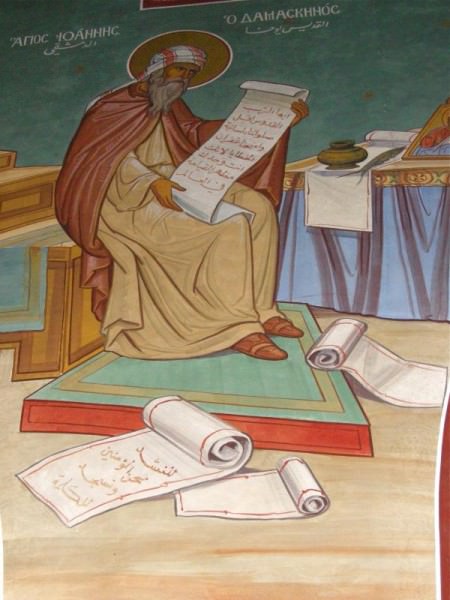
John of Damascus
John adds to Gregory's assertion when he succinctly states that the Holy Spirit exists "Having subsistence, existing in its own proper, and peculiar subsistence" (Damascus, 9). The Holy Spirit's subsistence is peculiar and unique. In other words, the Holy Spirit has the main focus of a particular activity even though the other members of the Trinity are still involved and supportive.This understood, John still maintains that the Spirit is "inseparable and indivisible from Father and Son, and possessing all the qualities that the Father and Son possess, save that of not being begotten or born" (Damascus, 9). Paradoxically, the Spirit is at one time distinguished from and yet unified with the other members of the Trinity.
RELATIONSHIP OF THE SPIRIT AND SON TO THE FATHER
Perceiving the conundrum this creates, John of Damascus attempts to further expound upon the relationship of the Spirit and Son to the Father. John suggests that the Father is the 'cause' of the Son and Spirit much in the same way that light is caused by a fire. He states, "Just as we do not say that fire is of one essence and light of another, so we cannot say that the Father is of one essence and the Son of another but both are of one and the same essence" (Damascus, 9). The two are intricately connected and one is not possible without the other. It is impossible to tell where one stops and the other begins, although some have differing opinions.
GREGORY OF NAZIANZUS ARGUES FOR THE DIVINITY OF THE SPIRIT AND ASSERTS ITS EQUALITY WITHIN THE DIVINE FAMILY.
Countering the idea that the Spirit may proceed from the Son, John suggests that with its unique purpose and character, the Spirit "is one Spirit, going forth from the Father, not in the manner of Sonship but of procession" (Damascus, 11). Jesus may have been begotten, but the Spirit was not. He points out that to say that the very force that helped incarnate the Son could even proceed from the Son would be illogical (if not impossible).
As Gregory states, the Spirit is not just a "grandson God" (Nazianzus, The Fifth Theological Oration - On The Spirit, 197).Additionally, when the New Testament speaks of the "Spirit of the Son," John asserts that the term refers to the confession that the Spirit is manifested and imparted to humanity through the Son much like the way the Sun is manifested through its rays and radiance to the one seeing it. It is in the profound sense of revelation, not just association.
HUMAN PERCEPTION OF THE GODHEAD
All of these contributions to Trinitarian understanding are valuable for theologians; however, in many ways, Gregory and John's teachings (as well as others in the Eastern and Western perspective) are problematic. Their examinations are extremely useful in defining what the Holy Spirit and the rest of the Trinity members are not. Most of the questions of conflict that Gregory and John analyze and discuss revolve around the reduction of the divinity of the Trinity and/or the anthropomorphizing their characters. For these ancient theologians, this approach was definitely unorthodox thinking (and dangerous), as it went against traditional Judeo-Christian biblical precedent.

Gregory of Nazianzus
Yet, in attempting to define what the Trinity is, these Eastern theologians were still restricted to using human terms in their definitions. If the Father, Son, and Holy Spirit are transcendent and supernatural, then any symbols attached to them can only be a partial reflection of what they really are, and any definition is limited by human communication and reasoning. John of Damascus attests to this when he states, "It is quite impossible for us men clothed about with this dense covering of flesh to understand or speak of the divine and lofty and immaterial energies of the Godhead" (Damascus, 13).
Furthermore, the human perception of the Godhead, then, is limited to what one experiences concerning God and what one reads in the Bible of his essence and attributes. As Tertullian, the Father of the Latin Church (c. 155 – c. 240 CE) put it,
For by whom has truth ever been discovered without God? By whom has God ever been found without Christ?By whom has Christ ever been explored without the Holy Spirit? By whom has the Holy Spirit ever been attained without the mysterious gift of faith? (Tertullian, A Treatise on the Soul ).
Wesley, the founder of the Methodist movement also proclaimed, "Indeed, how can we expect that a man should be able to comprehend a worm. How much less can it be supposed, that a man can comprehend God!" (Wesley, Sermon 67).
Furthermore, human experience and perception is always influenced by the surrounding culture, which could shift the focus one way or another. Thus, the Eastern perspective is valuable, but it cannot fully encompass the whole of Trinitarian thought as its interpretation is limited by social influencers/restrictions and cognitive limitations of its examiners—as is true for all past and future theologians.
CONCLUSION
Despite these complications, both Gregory of Nazianzus and John of Damascus courageously and resolutely sought to answer very difficult questions and explore various controversial assumptions regarding the Trinity. The conclusions they came to may not be conclusive, but through their efforts to safeguard doctrinal truths, they battled what they considered to be heretical thought and, in turn, helped enlighten the world to a logical, more systematic, functional understanding of the relationship between the Father, Son, and Holy Spirit. Modern theology is truly in their debt for, in a great sense, Gregory and John took the question of the Trinity out of sheer speculation and moved it into the realm of scholarly contemplation, scrutiny, and study.
LICENSE
Article based on information obtained from these sources:with permission from the Website Ancient History Encyclopedia
Content is available under License Creative Commons: Attribution-NonCommercial-ShareAlike 3.0 Unported. CC-BY-NC-SA License